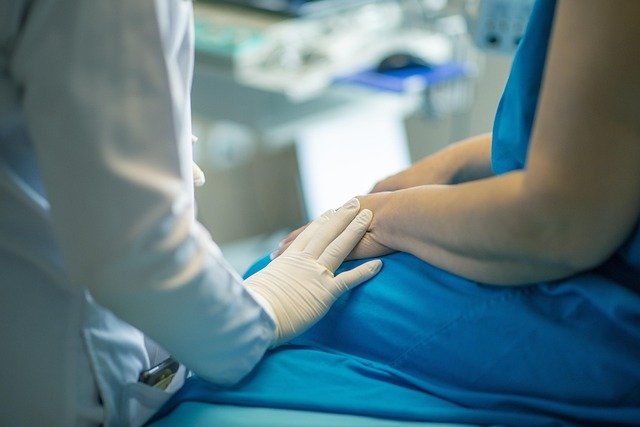Restoring Youthful Contours and Confidence Through Surgery
Mastopexy is a surgical procedure designed to raise and reshape sagging breasts for a more youthful appearance. As the body ages, factors like pregnancy, weight fluctuations, and gravity naturally affect breast tissue, causing many women to seek solutions that restore firmness and position. This procedure addresses these concerns without necessarily changing breast size, focusing instead on elevating tissue and repositioning the nipple-areola complex.

A mastopexy procedure rejuvenates the appearance of drooping breasts by removing excess skin and tightening surrounding tissue. Unlike augmentation, which increases size, this surgery specifically addresses position and shape. The procedure has gained popularity as women increasingly seek solutions that help them feel more confident in their bodies while maintaining a natural look. Understanding the options, benefits, and considerations can help those contemplating this procedure make informed decisions about their body.
Understanding Breast Lift Options & Benefits
The surgery offers several technique options depending on the degree of sagging and desired outcome. The crescent lift addresses minimal sagging with a small incision along the upper half of the areola. The periareolar or “donut” lift works for mild sagging through a circular incision around the entire areola. The vertical or “lollipop” lift combines the periareolar incision with a vertical incision down to the breast crease, ideal for moderate sagging. The inverted-T or “anchor” lift adds a horizontal incision along the breast crease, providing the most dramatic results for significant sagging.
The benefits extend beyond aesthetic improvements. Many women report increased comfort during physical activities as the procedure eliminates excess skin that may cause irritation or restrict movement. Clothing and swimwear often fit better after surgery, expanding wardrobe options. Perhaps most significantly, many patients experience a psychological boost, reporting improved body image and self-confidence following recovery.
Why Consider a Breast Lift? Addressing Sagging
Breast ptosis (sagging) occurs naturally over time and can be classified into different grades depending on severity. Grade I ptosis shows mild sagging with the nipple at the inframammary fold level. Grade II features moderate sagging with the nipple below the fold but still above the lower breast contour. Grade III represents significant sagging with the nipple pointing downward at the lowest part of the breast. Understanding this classification helps determine the appropriate surgical approach.
Women consider this procedure for various personal reasons. Post-pregnancy changes often include volume loss and stretched skin that doesn’t retract fully. Significant weight fluctuations can similarly affect breast tissue elasticity. The natural aging process reduces skin elasticity and breast tissue firmness regardless of other factors. Some women seek correction for asymmetry that has always been present or developed over time. Whatever the motivation, mastopexy can provide a solution for those bothered by these changes.
Exploring Your Breast Lift Choices for Confidence
The consultation process represents a critical step in the surgical journey. During this time, a qualified plastic surgeon will evaluate breast tissue, skin elasticity, and the degree of sagging. They’ll discuss goals and expectations while explaining suitable techniques. This conversation should include realistic outcome discussions, potential risks, and recovery timelines. Patients should feel comfortable asking questions and expressing concerns during this important planning phase.
Some patients combine procedures for comprehensive results. A mastopexy with augmentation adds implants to increase volume while improving position. Conversely, some women choose a lift with reduction to achieve both smaller size and improved shape. Many women include breast procedures as part of a “mommy makeover” that addresses multiple post-pregnancy body changes simultaneously. These combination approaches require careful consideration of recovery times and potential complications.
Factors Affecting Breast Sagging & Lift Solutions
Several biological and lifestyle factors influence breast sagging. Genetics plays a significant role in determining skin elasticity and breast tissue composition. Hormonal fluctuations during pregnancy, breastfeeding, and menopause affect breast tissue density and volume. Smoking damages skin elasticity by reducing collagen production and oxygen supply. UV exposure similarly breaks down collagen and elastin fibers that maintain skin firmness. Proper bra support, especially during exercise, can help minimize ligament stretching that contributes to sagging.
Preventive measures can slow the progression of breast ptosis but cannot completely prevent it. Maintaining stable weight helps avoid the stretch-deflate cycle that damages skin elasticity. Regular moisturizing supports skin health, while sun protection prevents UV damage. Strength training exercises for chest muscles can improve the appearance of the breast area, though they cannot lift the actual breast tissue. While these measures help, they cannot replicate the results of surgical intervention for already sagging breasts.
Navigating Breast Lift Risks and Outcomes
Like all surgical procedures, mastopexy carries potential risks that patients should understand. General surgical risks include infection, bleeding, and anesthesia complications. Specific concerns include scarring, changes in nipple or breast sensation, asymmetry, and difficulties with breastfeeding after surgery. While serious complications are rare with qualified surgeons, patients should have realistic expectations about recovery challenges and potential outcomes.
The recovery process typically progresses through several phases. The immediate post-operative period of 1-2 weeks involves managing discomfort, wearing surgical support garments, and limiting physical activity. Weeks 3-6 allow for gradual return to normal activities with continued avoidance of strenuous exercise. By 2-3 months, most swelling resolves and scars begin to fade, though complete scar maturation takes 12-18 months. Throughout recovery, following the surgeon’s instructions carefully optimizes healing and final results.
Results typically include elevated breast position, improved shape, and repositioned nipples facing forward rather than downward. While the procedure creates significant improvement, it doesn’t permanently stop the aging process. Future pregnancies, weight fluctuations, and natural aging will continue to affect breast appearance. Some patients may consider a revision procedure after many years, though many find their results satisfying for a decade or longer with proper care and healthy lifestyle choices.
This article is for informational purposes only and should not be considered medical advice. Please consult a qualified healthcare professional for personalized guidance and treatment.




